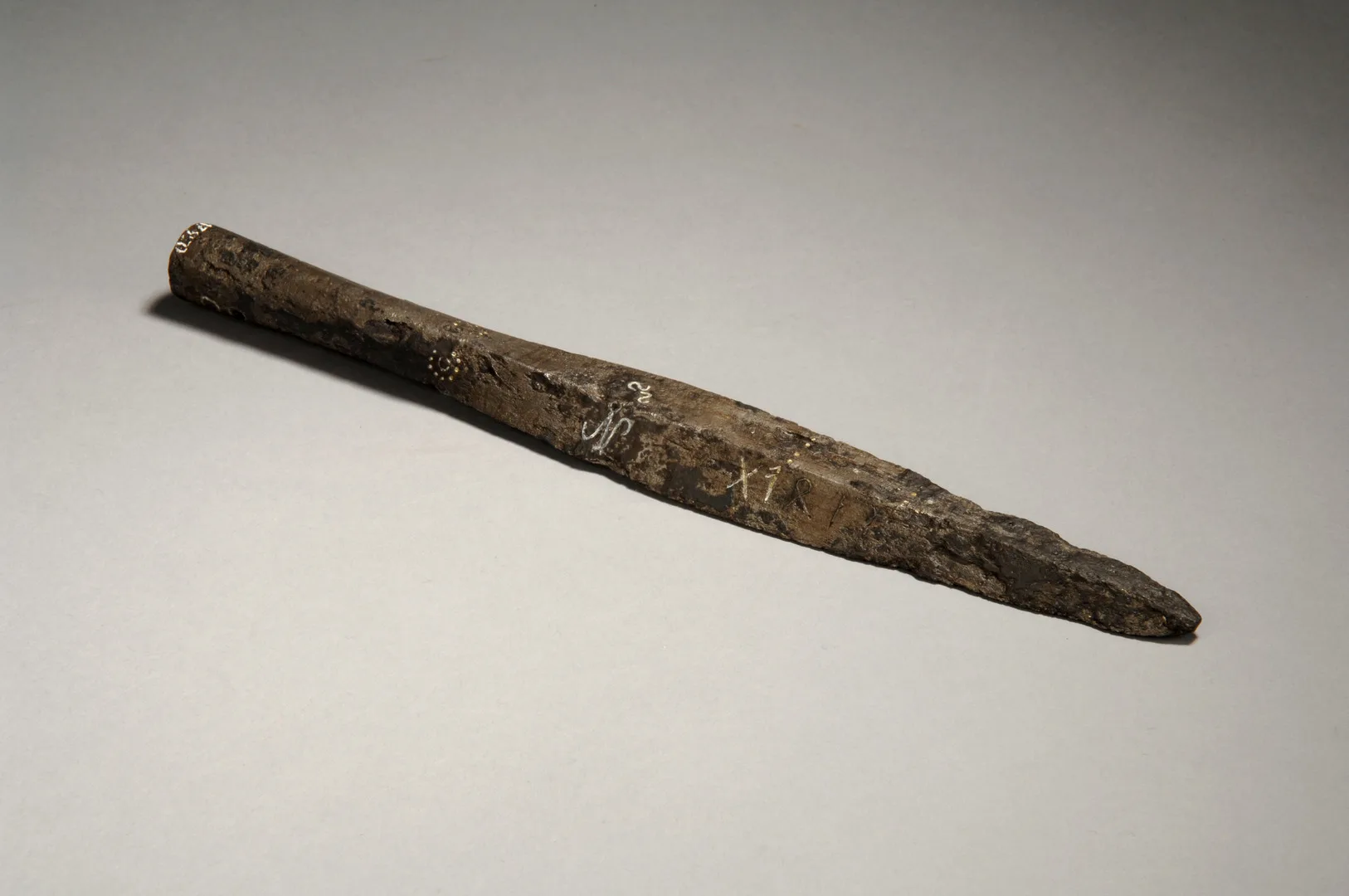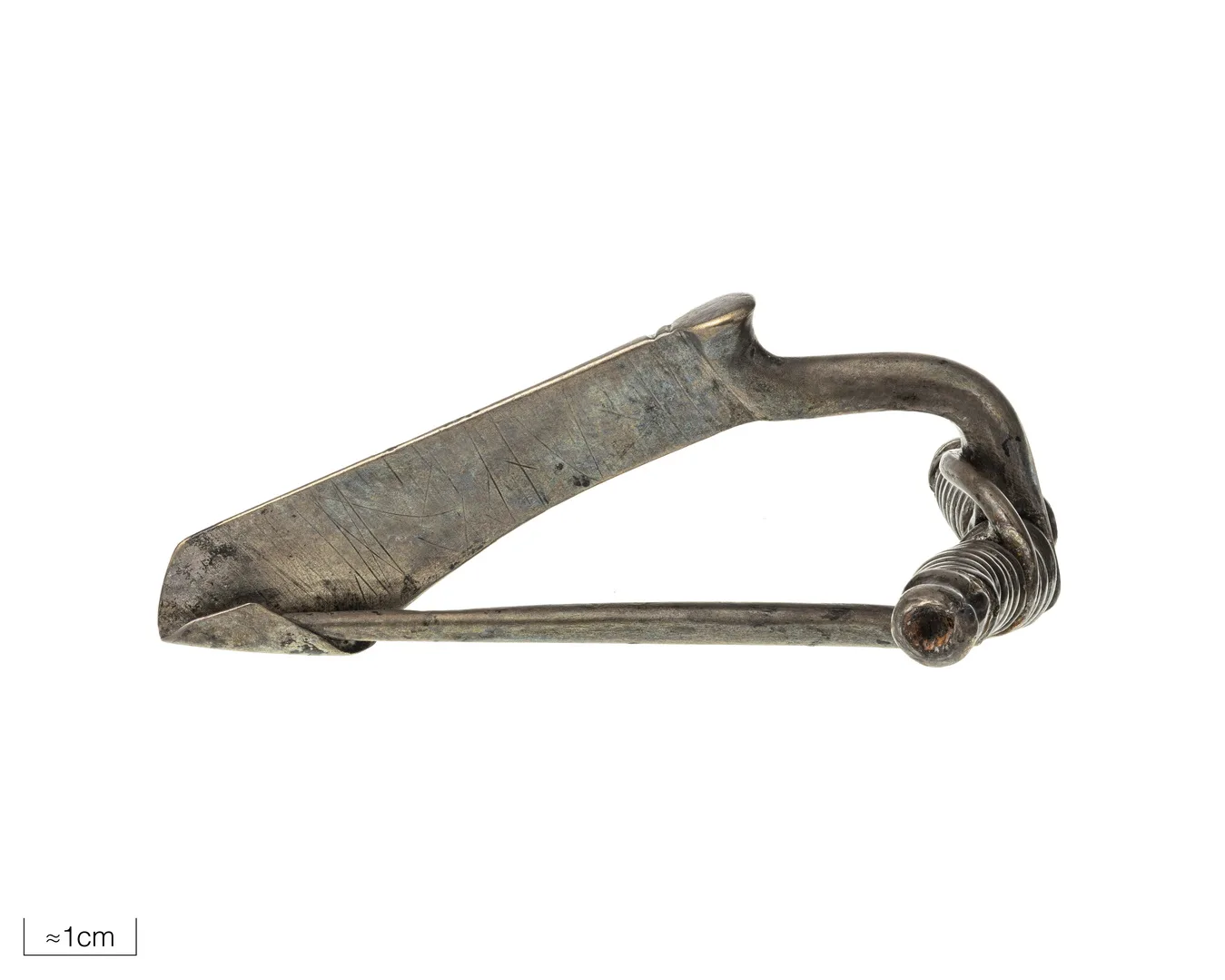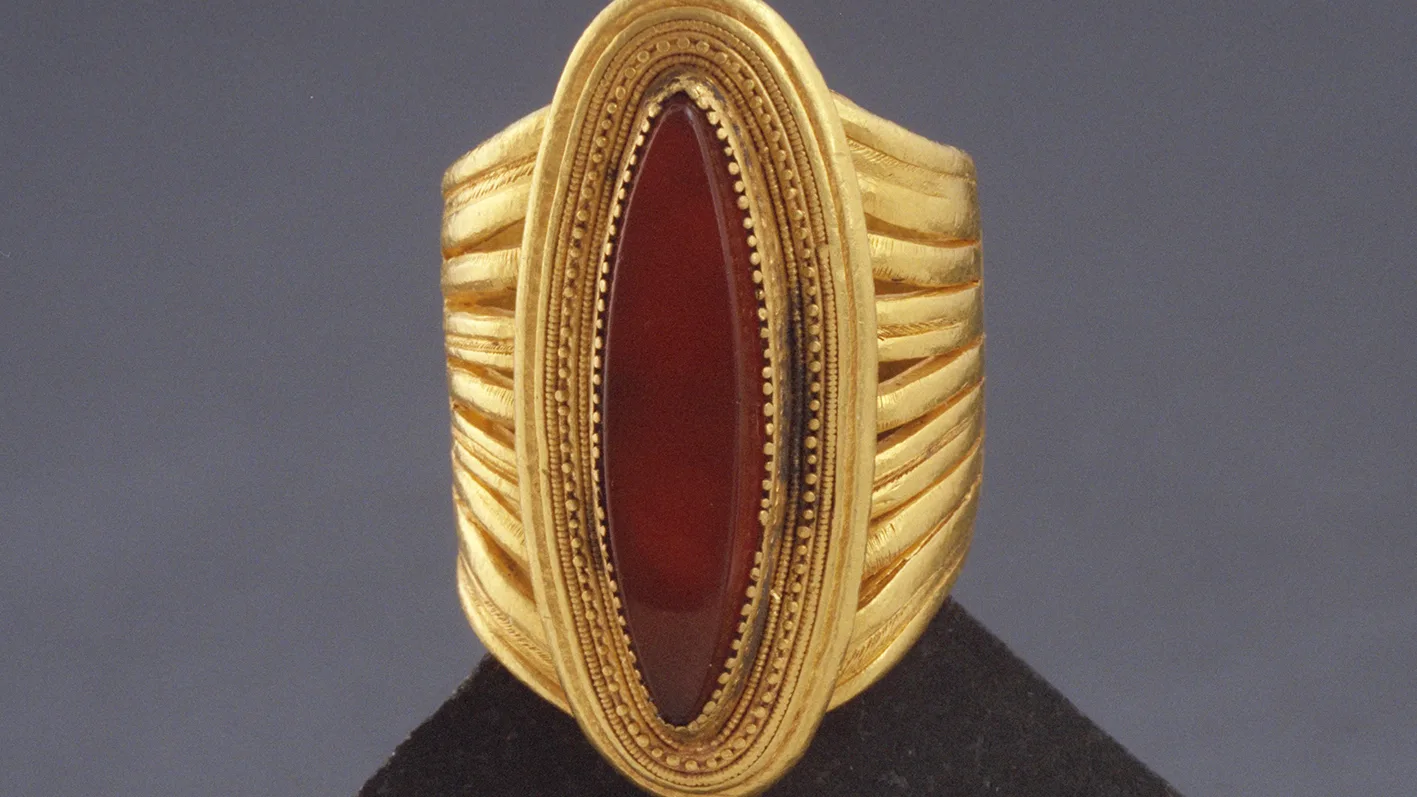The first runes
Bronze Age
1700 BC – 500 BC
Iron Age
500 BC – AD 1100
Viking Age
AD 800 – AD 1100

The inspiration for the runic script came mainly from the Roman alphabet. The runes were made angular because they were intended to be carved into wood. This design choice may also have served to distinguish the runes from the rounded letters of the Roman script, underlining that this was something distinct and uniquely Norse.
Originally, the runic alphabet contained 24 characters, but by the Viking Age it had been simplified to just 16. The oldest preserved runic inscriptions are found on various objects, mostly dating from the 3rd and 4th centuries. These inscriptions usually consist of a single word or a short phrase, often indicating the name of the object's owner or the person who created the inscription. Certain special items also bore their own names, carved in runes.
One such example is a spearhead found at Mos in Stenkyrka parish on the island of Gotland, inscribed with the word gaois. This translates to “the screamer,” referring to the whistling sound the spear would make when hurled through the air in battle.

The Gaois spear
On view at Historiska museet in the exhibition Forntider 1
I, Unwodz
Another of the earliest known runic inscriptions comes from Gårdlösa in Smedstorp parish in Skåne (southern Sweden). Around the year 300, a powerful woman was buried there. She was in her early twenties when she died and was dressed in clothing adorned with several bronze and silver brooches (fibulae). One of these likely fastened a large shawl draped over her shoulders, and from a silver brooch on her chest hung a string of amber and multi-coloured glass beads.
On the back of the pinholder of this brooch is a runic inscription from the older futhark that reads ek unwodz meaning “I, Unwodz.”
The name Unwodz could be either male or female and is made up of two parts: Un- meaning “not,” and -wodz meaning “frenzied” or “raging.” So, the name translates as “the calm one” or “the un-frenzied.” It was probably the name of the woman buried with the brooch, and she may even have carved the inscription herself. It is rare that we can identify the name of a person in an Iron Age grave.

Fibula with runic inscription
Clasp from the Viking Age
On view at Historiska museet in the exhibition Forntider 1
Unwodz was not alone in wearing a string of beads across her chest and a brooch bearing her name in runes. On the contrary, she was following the fashion of the regional elite. Similar grave goods have been found in many high-status female burials from the 3rd and 4th centuries in southern Scandinavia, particularly on the Danish island of Zealand.
In most of these cases, the runic inscriptions were placed on the reverse side of the brooch or on some other discreet part of the jewellery. Despite being something new, the runes were not meant to be shown off. They appear to have had a more private or hidden significance.
Many scholars also believe that the word rune originally meant “secret” or “mystery.” Whether that is truly the case remains uncertain. Some argue that it instead meant “inscription,” “message,” or simply “to write.” But whatever the precise meaning, there was likely a belief that runes conferred something special upon the object they were carved into, and, by extension, to its owner or user.
That may well be why Unwodz wore her runic inscription turned inward toward her body, rather than facing outwards for others to see.




